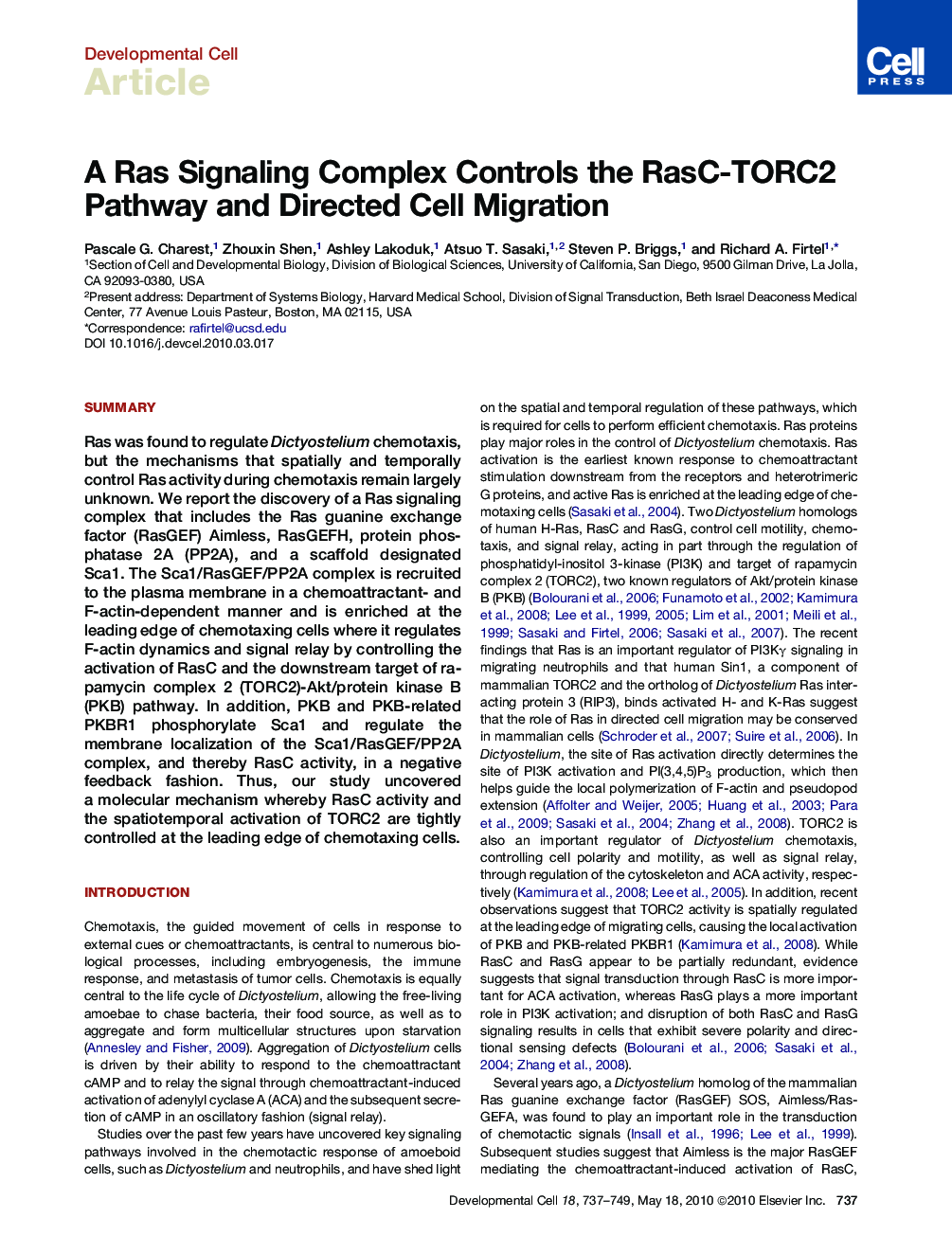| کد مقاله | کد نشریه | سال انتشار | مقاله انگلیسی | نسخه تمام متن |
|---|---|---|---|---|
| 2177126 | 1094624 | 2010 | 13 صفحه PDF | دانلود رایگان |

SummaryRas was found to regulate Dictyostelium chemotaxis, but the mechanisms that spatially and temporally control Ras activity during chemotaxis remain largely unknown. We report the discovery of a Ras signaling complex that includes the Ras guanine exchange factor (RasGEF) Aimless, RasGEFH, protein phosphatase 2A (PP2A), and a scaffold designated Sca1. The Sca1/RasGEF/PP2A complex is recruited to the plasma membrane in a chemoattractant- and F-actin-dependent manner and is enriched at the leading edge of chemotaxing cells where it regulates F-actin dynamics and signal relay by controlling the activation of RasC and the downstream target of rapamycin complex 2 (TORC2)-Akt/protein kinase B (PKB) pathway. In addition, PKB and PKB-related PKBR1 phosphorylate Sca1 and regulate the membrane localization of the Sca1/RasGEF/PP2A complex, and thereby RasC activity, in a negative feedback fashion. Thus, our study uncovered a molecular mechanism whereby RasC activity and the spatiotemporal activation of TORC2 are tightly controlled at the leading edge of chemotaxing cells.
Graphical AbstractFigure optionsDownload high-quality image (299 K)Download as PowerPoint slideHighlights
► A Ras chemotactic signaling complex: a scaffold (Sca1), two RasGEFs, and PP2A
► The Sca1 complex regulates cell motility and signal relay via adenylyl cyclase
► The Sca1 complex controls the RasC-TORC2-PKB pathway at the leading edge
► TORC2 and PKB control the Sca1 complex and RasC through negative feedback
Journal: - Volume 18, Issue 5, 18 May 2010, Pages 737–749